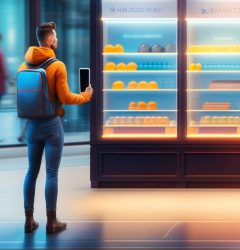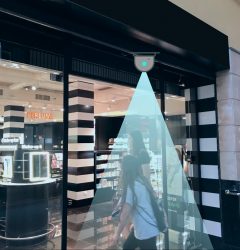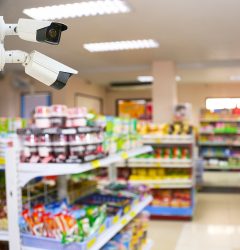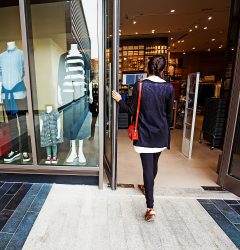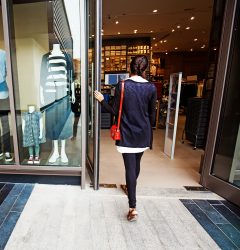01 Aug
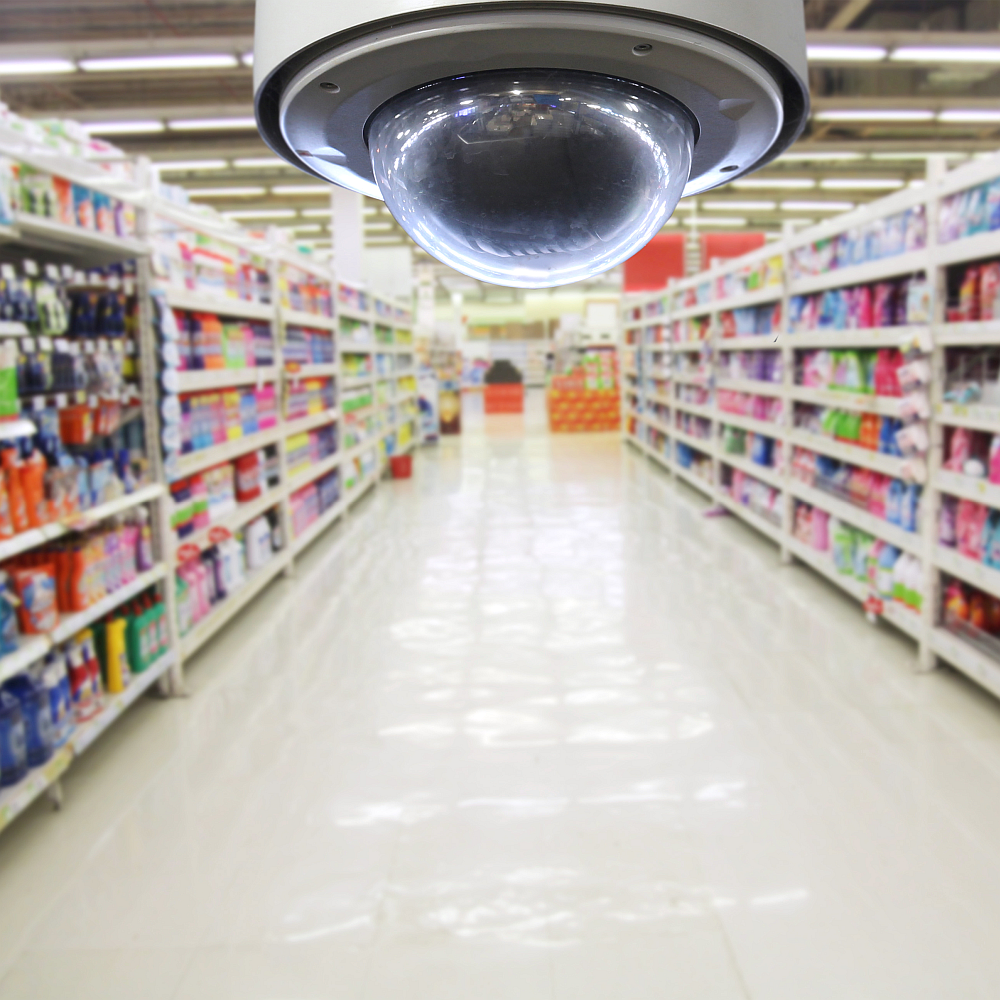
How to Use People Counting and Conversion Rates to Increase Sales?
People counting, also called retail footfall, is the number of people entering and exiting your store. It gives you a critical view of store occupancy and the dynamic of your store’s operations. You can’t make informed decisions without store occupancy and conversion rate analytics.
People counting data becomes more valuable when combined with other sources, such as Point of Sale (POS) data, because it enables you to compute conversion rates and analyze the number of sales. You can count people via different technologies, including:
• Sensors to detect a retail footfall threshold
• High-end cameras to detect directions
• Infrared systems to reduce false positives from shopping carts
Cameras designed/developed for people counting straddle the line of cost accuracy and efficiency. Besides, retailers can use cameras to review videos and gain insights, analyze operational processes, and evaluate the required changes. Today’s article will answer how to use people counting and conversion rates to increase sales. We will also discuss the cutting-edge technologies to streamline the entire process and achieve your goals. Read on!
The Importance of People Counting and Conversion Rates
People counting is critical because it gives you visibility into your store’s operations and a complete picture of the factors behind sales. When you have valuable data about store occupancy, you can take action to address issues, leverage opportunities, and increase sales. People counting is essential to computing conversion rates. You must understand whether prospects are effectively converted into customers. Without retail footfall analysis, you may miss the complete picture and make less informed decisions. Bear in mind that decisions based on gut feelings lead to adverse outcomes. Conversion is an integral component of a retail business. It enables you to evaluate how well your store carries out its operations and executes the correct strategies to convert prospects into high-paying customers. You can compute conversion rates when combining two disparate data sources: POS data and people counting data. Conversion is the number of transactions in your retail store divided by the number of people.
Conversion rate = Transaction count / People count
However, conversion depends on various factors, including a highly trained sales team, the correct prices for the products’ perceived value, and the suitable selection in stock. However, knowing, understanding, and evaluating conversion rates are different things. In simple words, knowing it is half the battle. Recognizing your store’s outperformers and underperformers is critical to understanding, comparing, contrasting, and evaluating people counting and conversion rates. Assessing conversion provides you with a solid feedback loop: involving
• Action
• Review
• Re-Action
• Re-Evaluate
• Repeat
How to Evaluate Sales?
Location, marketing, store appearance/layout, service, and assortment are five factors to consider when streamlining your business success and improving your company’s overall bottom line. However, there are four factors to consider when evaluating your store sales:
1. People Counting: Store traffic or customers entering your store
2. Conversion Rate: The number of transactions to the people counted or converted prospects
3. Average Dollar/Revenue Per Transaction: How much consumers spend when they purchase your store products
4. Shrinkage: How much revenue is lost from excessive causes? For example, employee theft
Evaluating these four factors gives you a complete picture of your retail store sales. People counting gives you more visibility into the first two components: retail footfall in your store and conversion rates. Any analysis you perform to assess sales is incomplete without it. Recognizing these four factors independently gives you a starting point, allowing you to dissect sales, evaluate and identify across locations, and improve components contributing to the top line. Moreover, you can start with a scorecard highlighting “people count,” “conversion rates,” and “average revenue per transaction” across your retail stores. These metrics can help you measure sales, identify issues, implement suitable solutions, and improve your business’s bottom line.
Benefits of Retail Store Occupancy Management
The benefit of using real-time data analytics and automated occupancy solution like “Link Occupancy Signs” provides you with multiple uses. For instance, people counting and store occupancy tells you about the number of people entering and exiting your store in real-time. It also tells you about the dwelling time in specific areas and the number of customers present at any given time. You can compare the real-time data to your POS system to determine and measure conversion rates. In addition to focusing on monitoring store occupancy, an automated system allows you to:
Helps You Identify Peak Hours
Store occupancy management enables you to determine peak hours at your facility. The purpose is to ensure you allocate more staff in areas/segments with more customers. You will know whether you should reallocate resources or redirect your retail store’s team to help on the sales floor based on real-time people counting in a specific location. In addition, you can use real-time data to identify problems, develop a suitable strategy immediately, schedule staff, and allocate future shifts. Therefore, a cutting-edge solution like “Link Occupancy Signs” can streamline the entire process.
Plan Your Retail Store Management
The Covid-19 pandemic has stunned the world and caused problems for various businesses, including retailers. According to Harvard Business Review (HBR), retailers must develop a solid policy and strategy to encourage consumers to maintain social distancing protocols in the store to reduce infection rates. Therefore, prioritizing retail store management during slow times enables effective sanitizing to fulfill the Covid-19 requirements. Monitoring retail footfall and occupancy rates can help you create a solid strategy and schedule the timings to restock stock shelves or clean the facility to mitigate the risk of Covid-19.
Increases Retail Store Efficiency
Many retailers have incorporated manual solutions for people counting and retail footfall evaluation, leading to human errors and incorrect data collection. For instance, if your staff member stands at the door and counts people using tally marks, they are more likely to commit a significant margin of human error. As a result, this will lead to inaccurate people counting. Moreover, when you have only one entrance open at a time, your customers won’t know how long they will wait to enter the store. That’s why using a real-time store occupancy management system is critical to avoid risks and optimize processes. Link Retail is a reputable company that offers cutting-edge solutions to retail stores. The company’s real-time data analytics and occupancy monitoring system based on artificial intelligence and machine learning algorithms give you real-time data and analytics.
The purpose is to generate insights and make informed decisions. You can use the “Occupancy Signs System” to leverage various metrics and key performance indicators (KPIs) to streamline your retail store operations and ensure everything complies with the occupancy limitation regulations. The “Link Retail” monitoring system works accurately with the installed camera, enabling you to monitor and evaluate the retail footfall and the number of people entering and exiting the store.
Keeps Customers Safe
Link Retail’s Occupancy Monitoring System can accurately measure retail footfall and retail customer counting, making it easier for you to manage and monitor your store’s occupancy rates in real-time. The primary objective is to ensure customers entering your store, and the staff present in the facility remain safe. You can even ask your customers to wait outside the facility based on the insights generated by Link Retail’s monitoring system. That way, you can accurately determine when customers can safely enter the store. Thus, you don’t need to deploy security personnel to allow or stop customers from entering the store. Not only does this increase customers’ trust and improve your brand reputation, but it also increases the number of sales and generates higher returns on investments (ROIs).
Final Words
As a retail store owner or manager, you can’t have a complete view of your store’s operations and sales without people counting. At the same time, you can’t review the conversion rates without collecting real-time data using a cutting-edge system like Link Retail’s AI-powered people counting solution. Contact us today for more information on our products.
Related Post
Tags
Keywords
Tags
Resources
© 2020-2024 Link Retail. All rights reserved.

